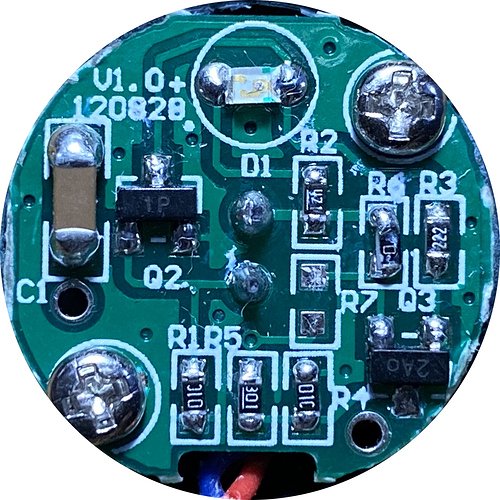Some measurements:
I used a white LED reading lamp, with several layers of draughting film over the front to attenuate the light. The sensor was therefore looking at a bright but diffuse patch of light approx. 30 mm in diameter.
EmonTx V3.4
| Condition | Output voltage | Distance to light source |
|---|---|---|
| Just detecting logic '1' | 1.42 V | 570 mm |
| LED just visible | 3.28 V | 460 mm |
| LED bright | 3.28 V | 400 mm |
EmonPi
| Condition | Output voltage | Distance to light source |
|---|---|---|
| Just detecting logic '1' | 1.35 V | 710 mm |
| LED just visible | 4.05 V | 540 mm |
| LED bright | 4.05 V | 450 mm |
Observations:
- The sensor appears to be sensitive to a wide spectrum of colours, even well into the blue.
- It was also very sensitive to light on the edge - i.e. entering between the pair of sticky pads, which seemed totally ineffective at blocking light from the side.
- When reading the table, bear in mind the inverse square law.
- A Weston light meter read ‘3’ at 570 mm from the light source (~ 35 lux).
- It would appear that when used with the emonPi, the output is being clamped by the protection diodes in the Atmega 328P’s digital input circuit. As we don’t know what the output circuit of the sensor is like, this is not good. (@glyn.hudson please note.)
@pb66
It seems quite possible that there can be enough ambient light to hold the output at a logic ‘1’ even though the green LED has gone out; in which case of course no pulses will be detected.
If @bardal sees pulses overnight, that would seem to confirm this is what’s happening.
[Edit - 20 June 2020]
This is the circuit board of the sensor:

And from that the circuit diagram:

Thanks to @warrenashcroft for providing the photo, and confirming the circuit details.